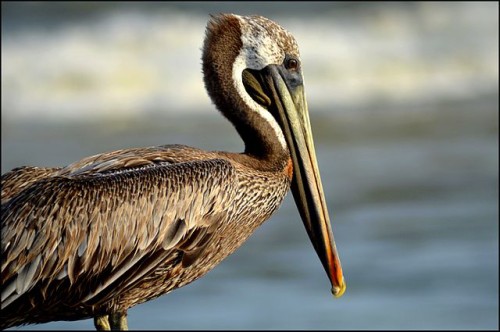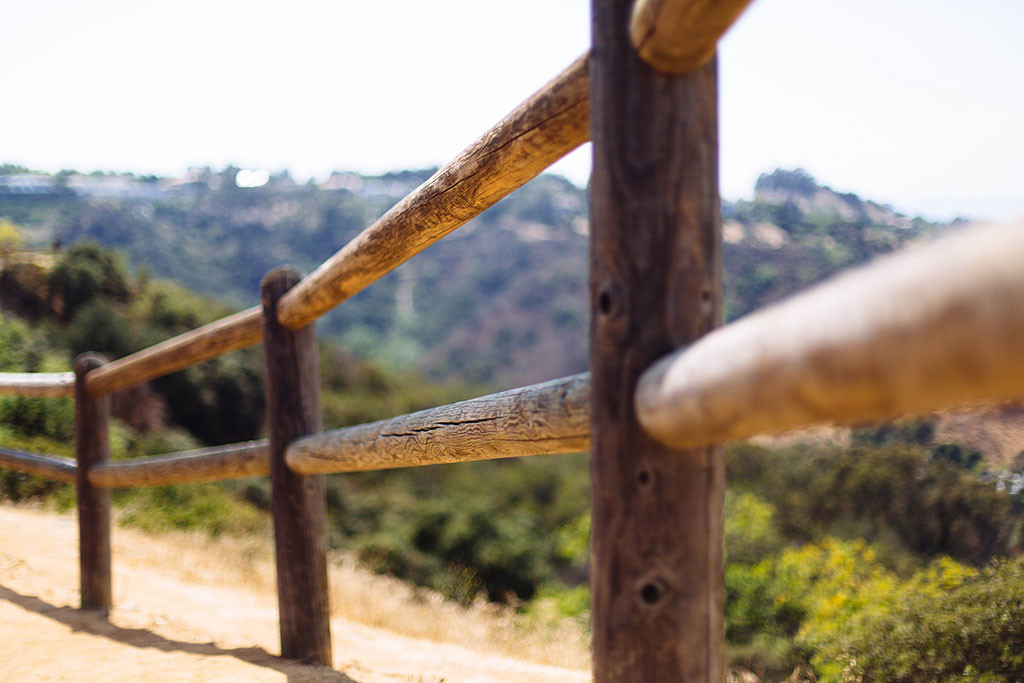Those who have been brave enough to drive with me through the years probably still have fingernail-scars imbedded in their palms from white-knuckling. I specialize in getting lost and rarely found. Have no sense of direction. And will never drive a freeway again unless you put a gun to my head.
 That should set the stage for a recent drive I did with one of the best and most patient navigators ever. Did I say that he was sight-challenged, as in almost blind? True. I was directed through the San Diego traffic by my friend, an unseeing eye guide named Claude. A former biologist and “birder,” this amazing genius has socked away an inventory of facts—flora and fauna and a whole lot more—into his brilliant brain. And one recent morning he offered to share his wisdom and memorized street sense with my friend Willie and me.
That should set the stage for a recent drive I did with one of the best and most patient navigators ever. Did I say that he was sight-challenged, as in almost blind? True. I was directed through the San Diego traffic by my friend, an unseeing eye guide named Claude. A former biologist and “birder,” this amazing genius has socked away an inventory of facts—flora and fauna and a whole lot more—into his brilliant brain. And one recent morning he offered to share his wisdom and memorized street sense with my friend Willie and me.
I picked him up at his home, whereupon he proceeded to kindly sense my inward breathing as I sucked in the stress of traversing my way around praying I’d be able to keep my precious cargo safe. Diminutive Willie was wedged into the back seat and Claude, all six-plus-something of him trying to find comfort in the passenger side. Feeling the inside of the door his fingers touched one of the many rocks I have tucked inside the car. “Oh, rocks!” he smiled. “Yes,” I laughed. “I have them everywhere. And smooth stones.” We commiserated. It seems he collected them as well.
And so our adventure began with me carefully following his directions and faint sightedness (the blind leading the blind?) to an experience I’ll never forget. Following Claude’s lead we rounded SeaWorld Drive (Gag. I wish they’d change the name) from the Hilton Hotel to West Mission Bay Drive turning onto Quivira Road by making two left turns, heading south, and passing the Marina Village Conference Center as the road bent westward again. With each twist and turn, Claude would alert me ahead of time beforehand. I couldn’t believe it.
Finally we stopped at a dirt-covered expanse overlooking the north side of the San Diego River Estuary. Claude—who articulates in a high-energy, mercurial style that is dramatic and punctuated with explanation points—explained to us that this was also known as the Flood Control Channel, with its artificially straightened, rock-fortified east-west oriented embankments.
 Willie and I took out our little binoculars and attempted to focus in on the various flocks of birds we saw on the distant exposed mud and sand flats. Claude would ask us what we saw and we’d do our best to describe the various feathered inhabitants that fed and flew and landed there. Claude then would thumb through his weathered bird-book and place the pages as close to his face as possible, still being able to grab some visuals and explain in excited detail what each avian happened to be.
Willie and I took out our little binoculars and attempted to focus in on the various flocks of birds we saw on the distant exposed mud and sand flats. Claude would ask us what we saw and we’d do our best to describe the various feathered inhabitants that fed and flew and landed there. Claude then would thumb through his weathered bird-book and place the pages as close to his face as possible, still being able to grab some visuals and explain in excited detail what each avian happened to be.
It was as if we were seeing for the first time—soon discovering that all those birds each had a classification, a distinct sound (which Claude easily replicated for us), a marking unique and separate like an air born thumbprint.
Guided by Claude’s insightful knowledge we were now seeing more than a bunch of birds. We were spotting what we learned were Brown Pelicans; and that large white wader with a yellow bill was a Great Egret; the smaller, all-dark wader was a Little Blue Heron; those nondescript, medium-sized gray shorebirds were Willets turning into striking black and white winged beauties as they took off in flight; the larger brown shorebirds with those long bills feeding on the mudflats were Marbled Godwits; and resting next to them were the Western Gulls, with white heads and underbellies, dark backs and wings; and that rough, raspy cry we heard belonged to the Caspian Tern, white birds with black caps and red bills.
It was a plethora of bird-sightings. And the incredible fact was that we were witnessing such wonder seen through the eyes of a nearly sightless man.
To gain an even better vantage point, we got into the car and headed to a new location, driving onto the Sunset Cliffs Boulevard overpass above the river to Ocean Beach, where we turned onto West Point Loma Boulevard westward to Bacon Street, and then turned right into Robb Field Recreation Park, on the south side of the river channel.
Upon parking, Claude pointed out something we would have never noticed in a million years had he not alerted us. It was a gigantic Osprey nest platform situated high atop a large light assembly for illuminating nighttime sports events in the ball-fields there. Noting that many sparrows seemed to be flying into and out of that huge nest, we asked Claude about it. He explained that it was kind of like a bird condo, ideal for hiding into the recesses of such a generous nest. Perfect.
Walking up a narrow hike-and-bike trail, we were nearly run over by an angry bicyclist with an attitude and then as we sat on a cement block listening to Claude’s ongoing observations a curious passerby—a lady walking her dog—stopped to ask our wise “professor” some bird questions. Oh how he loved to answer and offer his lifelong expertise! This was a joy, a passion that fueled him even as his eyes were now betraying him—and even his love for hiking and walking were being challenged by a hip that would soon need replacement. If he could only fly out of his body’s prison like the birds he loved so much. It all didn’t seem fair watching and listening to this strapping, handsome naturalist still youthful in his early sixties having to be body-slammed by an uncooperative body.
Right as we departed for our next destination, we noted the Rock Pigeon nearby. We’re so familiar with them everywhere but did you know that they “clap” their wings once they take off? You can hear them do that if you listen carefully.
And then we heard the differing coo-ing songs of the Mourning Dove which sounds more like a “boo-hoo” coo (hence the sorrowful name), as opposed to the gentle lullabye almost purring coo of the Eurasian Collared Dove. Once Claude pointed out the uniqueness of each bird call the distinction was so clear.
At last we headed back to West Point Loma Boulevard, going east to the Famosa Slough which was situated within a well-established suburban neighborhood. Who would have thought a sequestered wildlife preserve would be tucked right inside a residential area like a secret garden known only to those who sought it out and loved it.
Parking in front of a little trail we negotiated down into a designated, tidally-influenced wetland estuarine. Protected by the City of San Diego, it was thriving because of the hard-won efforts of local residents in association with the San Diego Audubon Society. The entire area received salty water from the San Diego River and fresh runoff water from surrounding areas. It was beautiful.

Finding a small bench we sat and watched and listened to the symphony of nature surrounding us. Munching on muffins and trail-mix, our senses were tuned into a world of sights and sounds Claude helped us experience with delight. Everywhere we looked there were lovely yellow and white daisies blossoming inside the rocky out croppings. Claude explained that they were actually called Garland Chrysanthemums, a non-native annual plant. And those other daisy-like yellow flowers with the dark centers were called California Encelia. They bloomed all along the leafy bushes outlining the trails.
What was that orangey, low-growing straggly mass spread across many of the bushes? Claude said that was a Dodder, a parasitic plant that attaches to low vegetation found along the shoreline. We sat and took it all in, listening to the lovely sounds of the Common Yellowthroat, the Song Sparrow and House Finch each singing from the bushy nearby vegetation. Claude would help us hear their different calls.
But it was the Northern Mockingbird that especially thrilled (trilled?) me. The fact that Claude was a member of our reading group that I led along with Gina and David (I was reading To Kill A Mockingbird to them each week) seemed to be the coup de grâce of this special morning. Not only did we hear the sweet song of the Mockingbird but Claude pointed out that this little bird was so named because it “mocked” the sound of other birds so perfectly you couldn’t tell that it was a ploy. But Claude knew instantly that it was a Mockingbird imitating another bird! I am still blown away by the remarkable ear and keen intelligence of this genius biologist.*
There are certain moments, times, days that are highlights. I’m sure you have them too. But this was one of those that will always cause me to smile. And to push me to be more aware. And be more grateful. To appreciate every lovely life moment and the gift of my senses to take each into my soul never to be forgotten. And to know a nearly blind Bird Man named Claude who has been able to help me see and hear in way I have never done before.
It was so worth the drive. And Claude must have thought so too because he said he’d do it again. With me behind the wheel. Amazing…
*I was especially curious about this Mockingbird mimicry adaptation and found this interesting article by C.Claiborne Ray you might enjoy as well. Helped me appreciate even more Harper Lee’s commentary that it would truly be “a sin to kill a mockingbird…”
Q & A
By C. CLAIBORNE RAY
Published: May 4, 2004
The Mockingbird’s Songs
Q: Why do mockingbirds mock? Is there an evolutionary advantage in mimicking other birds and even squeaky swings?
A: Ornithologists would be cautious about ascribing an evolutionary advantage to the mockingbird’s mimicry, said Dr. Joel Cracraft, curator of ornithology at the American Museum of Natural History, although they might speculate on how it started.
But little is known about the function of mimicry, and even if you can determine what that is, ”it may not be why it evolved,” Dr. Cracraft said. ”It may be for multiple reasons.”
Mockingbirds are part of the family Mimidae; virtually all of its species mimic all kinds of sounds. Their song-making anatomy ”is not really different from that of any other songbird,” Dr. Cracraft said. ”What is probably different is their neuroanatomy, their neural connections, but that would be hard to determine.”
”Mockingbirds use songs just like other birds, either to attract mates or to define territories, telling other birds to keep out, and it is likely that mimicking has something to do with these two things,” he said. It has also been suggested that mimicry might reduce hostile encounters with other species or recruit other species so they can collectively ”mob” predators, creating a lot of noise to scold and discourage them.
”Some birds duet and communicate with one another, presumably to keep in contact while feeding, but mockingbirds don’t seem to do that,” Dr. Cracraft said. ”They tend to sit and mimic whatever happens around them, whether bird noises or environmental sounds.”
